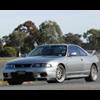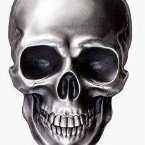Whiteline Adj. Swaybars Settings?
Announcements
-
Similar Content
-
Latest Posts
-
By joshuaho96 · Posted
I forgot you have a Nistune ECU. Use Nistune to do all the tests I mentioned instead of faffing with 30+ year old electrical connectors. You can read MAF volts off that too, there are reference values in the service manual to tell you roughly what it should be in different conditions. -
No. I think it might be the AFM. Hence the use of the terms "swaptronics", which implies the use of swapping out electronics for the purpose of diagnosis. It's about the only way to prove that a small/niggling/whatever problem with an AFM or a CAS or similar is actually caused by that AFM/CAS/whatever. A known good item swapped in that still gives the same problem is likely to be caused somewhere else. They're all the same. Spraying AFMs with cleaner is an each way bet between cleaning it and f**king it.
-
By codygrimm27 · Posted
Oh wow! This might actually work amazingly. Do you know the ratio of the diff? I was told the only thing you need to make sure of is if the front & rear diff ratios are the same. Ours is a 4.083 Thanks! -
By GabsReDeal · Posted
You think its the AFM? I know its a common issues on R32s. I find it coincidental how this issue raised right after cleaning the fuel system. As everything except the fuel system was fine before. I tried running it with the IACV unplugged but did not notice a difference and still stalled. However, the RPM gauge is not in the cluster right now, so I will need to connect the laptop again and use Nistune to check the RPM. I will check this weekend. -
A wise man once told me, "Anything you enjoyed wasting was not wasted".
-






Recommended Posts
Create an account or sign in to comment
You need to be a member in order to leave a comment
Create an account
Sign up for a new account in our community. It's easy!
Register a new accountSign in
Already have an account? Sign in here.
Sign In Now